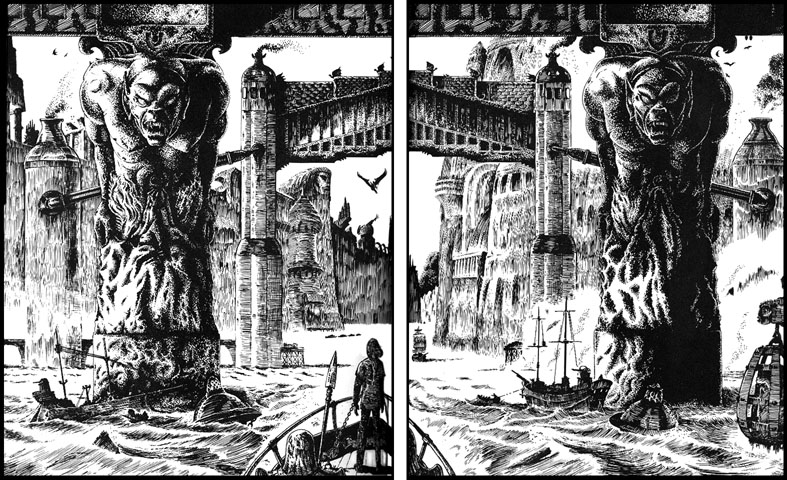

He is taken to Londra (London, of course) and the novel’s villain, Baron Meliadus, has a black jewel implanted in Hawkmoon’s head, which – like a miniature video-camera – will relay whatever Hawkmoon sees, so that Granbretan can both keep tabs on him and collect information about its enemies. In the first novel in the Hawkmoon tetralogy, The Jewel in the Skull (1967), Dorian Hawkmoon is captured by the army of Granbretan after leading a failed rebellion against the empire. Great Britain), with the help of a number of friends, including the wonderfully named Warrior in Jet and Gold and Huilliam d’Averc, a former nobleman from Granbretan who realigns his moral compass and ends up supporting Dorian Hawkmoon against the evil empire.


Cologne), who fights against the evil empire of Granbretan (i.e. But my favourite of all of these fantasy series was Moorcock’s four-volume Hawkmoon: The History of the Runestaff (Moorcocks Multiverse), about Dorian Hawkmoon, a Germanic duke of Köln (i.e. Moorcock’s most famous fantasy creation was Elric of Melniboné, an albino warrior conceived as a kind of ‘anti-Conan’ – indeed, an antihero more generally. Moorcock wrote a number of popular fantasy trilogies like this, churning out many of their constituent novels in as little as three days, among them two enjoyable trilogies about Corum Jhaelen Irsei, a prince inhabiting a world based on Cornish mythology, and including my favourite feline in all of fiction, the little winged black-and-white cat belonging to Corum’s companion, Jhary-a-Conel. And many of Moorcock’s early novels, written rapidly in the 1960s and early 1970s, were high fantasy trilogies which loosely followed the triple-decker publishing model set by The Lord of the Rings in the 1950s (owing to paper shortages after the Second World War, oddly enough: this was the only reason this long novel was initially published in three volumes, reverting to the Victorian model of chopping up a Dickens novel into three chunks for Mudie’s circulating libraries). Moorcock is often – somewhat lazily – labelled ‘the anti-Tolkien’, but of course it was the cult-like popularity of Tolkien’s work in the 1960s counterculture that helped pave the way for the fantasy boom. Indeed, it was Michael Moorcock who wrote the most famous denunciation of The Lord of the Rings in his essay, ‘ Epic Pooh’.


 0 kommentar(er)
0 kommentar(er)
